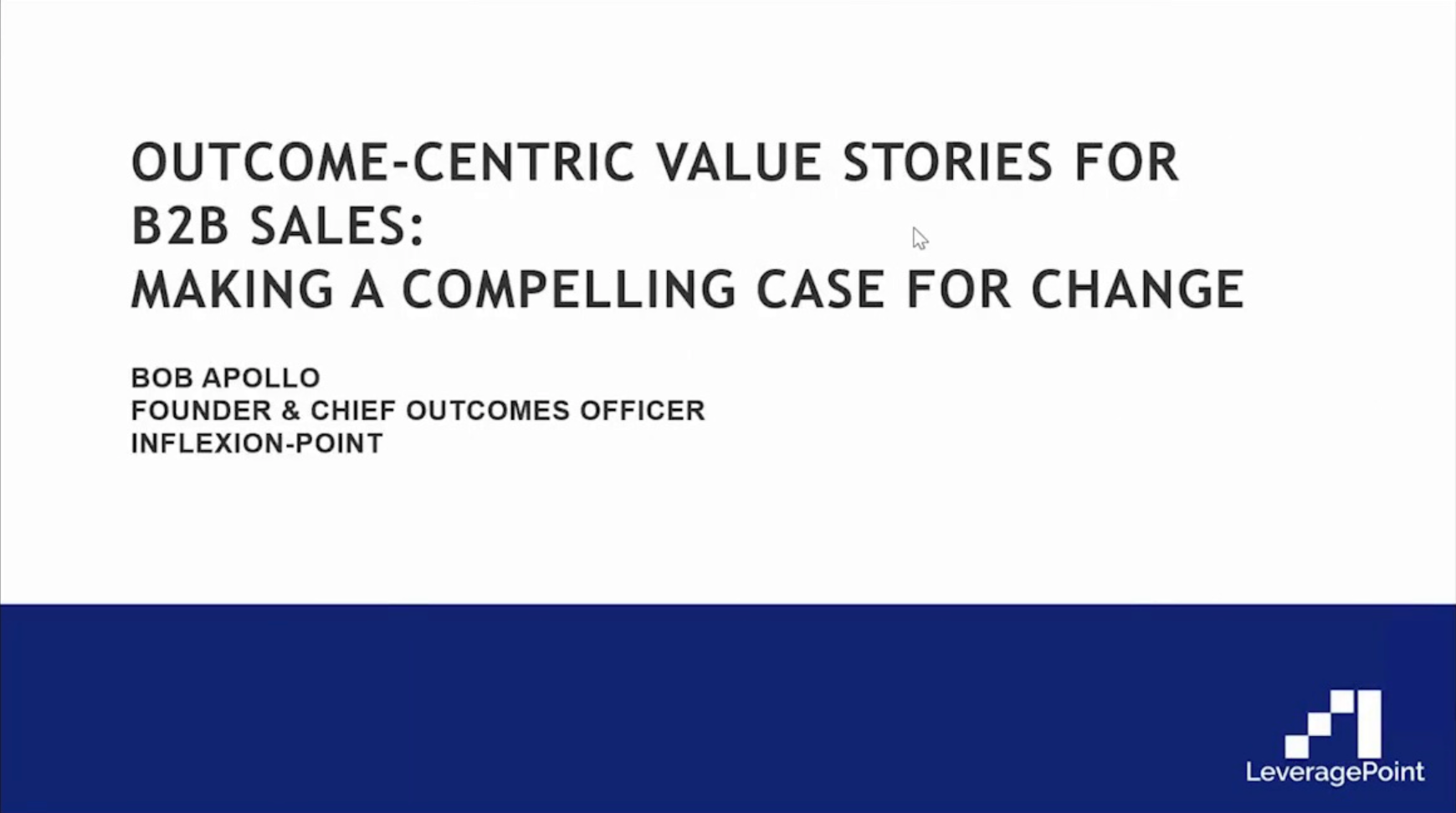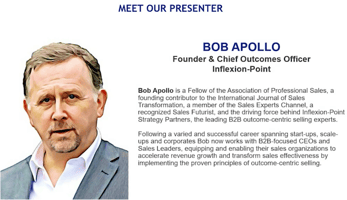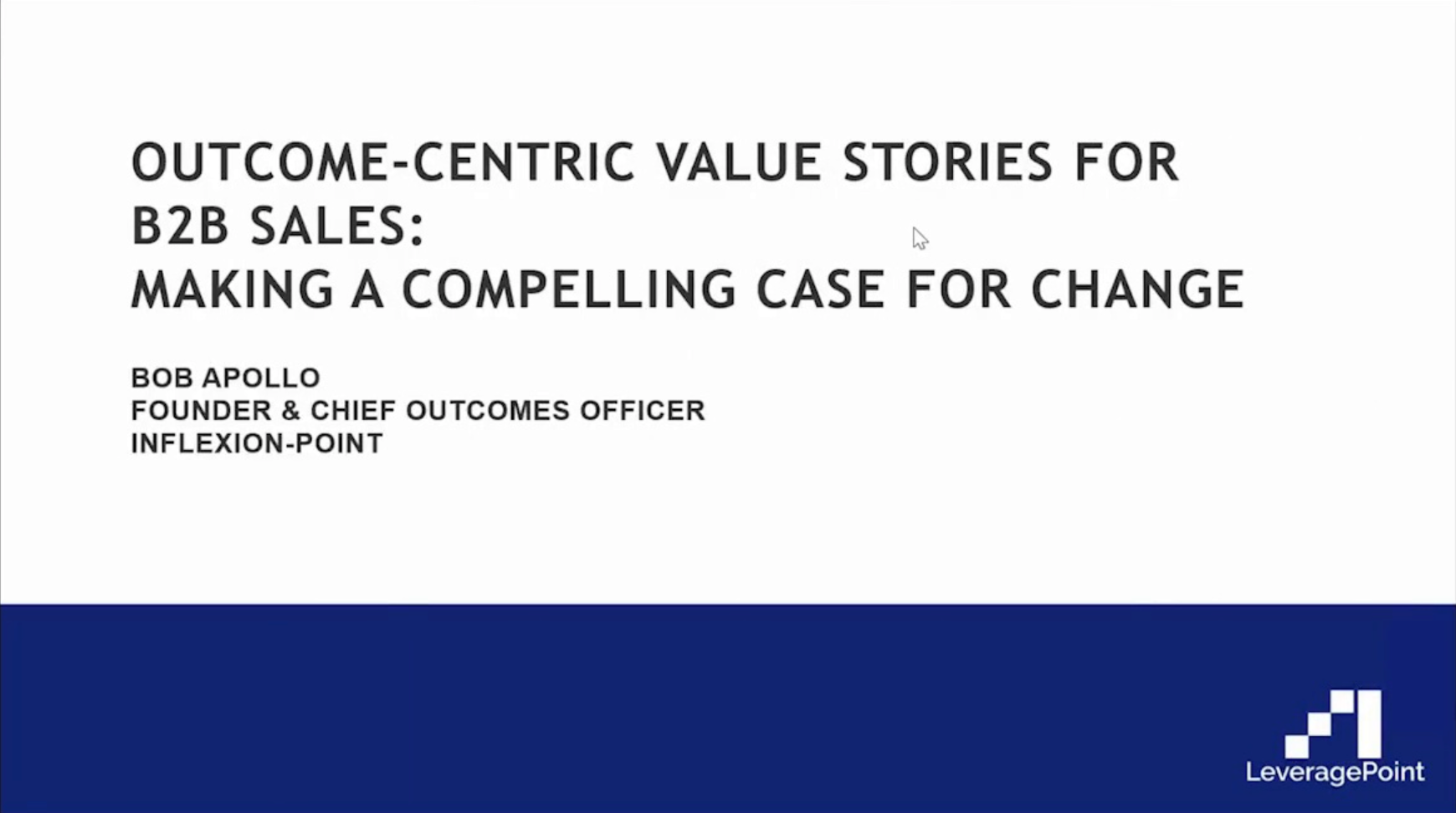Webinar: Three Gaps and a Bridge
September 1, 2021

 I recently recorded a webinar with LeveragePoint (link below) about “making a compelling case for change”. Those of you who have followed me over the years know that this has long been a favourite topic of mine, and with good reason: “no decision”, doing nothing and sticking with the status quo has become unfortunately common outcome.
I recently recorded a webinar with LeveragePoint (link below) about “making a compelling case for change”. Those of you who have followed me over the years know that this has long been a favourite topic of mine, and with good reason: “no decision”, doing nothing and sticking with the status quo has become unfortunately common outcome.
In fact, according to many analysts, a decision to “do nothing” is now the most common result of discretionary purchasing projects in complex environments that require the prospect to accept that significant change is going to be required.
Faced with the prospect of disruption, unless the benefits of change are seen to significantly outweigh the investment required, and unless the ultimate approvers can reach a consensus, the majority of organisations conclude that they might was well simply continue on their current path....
If your salespeople find themselves in this position with any sort of regularity - losing at the end of a lengthy sales cycle to the status quo - then there tend to be only two credible explanations:
- The opportunity was poorly qualified: there never was the potential to establish a compelling case for change, and the salesperson should have recognised this and withdrawn politely at an early stage in the sales cycle
- The opportunity was well qualified, but the sales execution was flawed. The salesperson had the chance to establish a compelling case for change, but failed to do so and the prospect remained unpersuaded
It’s also a sign that one or more of your customer’s four critical questions did not have a strong enough answer:
[1] Why is our current situation unsatisfactory?
[why do we need to change, rather than stay on our current path]
[2] Which option should we implement?
[why should we choose you, rather than any other option]
[3] Why is action urgent?
[why do we need to act now, rather than later]
[4] Who is going to benefit, and how?
[why should we support this project, rather than other priorities]
As I explained in the webinar, the most effective response to these questions involves three gaps and a bridge. Let me explain what I mean.
Gap #1: The Outcome Gap - Why Change?
The outcome gap involves the contrast between your customer sticking with the status quo (their current situation) and changing direction to achieve a better future outcome. Whenever this “outcome gap” is seen to be insignificant, your prospect is likely to remain on their current path.
But whenever their outcome gap is clearly significant and/or growing, your prospect is far more likely to commit to urgent action. How can you achieve this? By turning up the contrast: convincing them that staying on their current path is more dangerous than they have recognised whilst persuading them that the benefits of change are more significant than they realise.
Gap #2: The Solution Gap - Why You?
Having maximised the outcome gap, you then need to turn your attention to the solution gap. This involves the contrast between your distinctively different approach and all their other alternative options. Whenever this “solution gap” is seen to be insignificant, your prospect is likely to choose the cheapest or most familiar option.
But the wider the solution gap between your approach and all their other options, the more likely they are to choose you and to be willing to pay a premium price for your solution. Once again, this is a matter of turning up the contrast: Persuading them that all their other options offer inadequate or incomplete solutions, whilst convincing them that your approach is different and is the one most likely to lead to better outcomes.
Gap #3: The FOMO Gap - Why Now
For those of you unfamiliar with the acronym, FOMO stands for the Fear of Missing Out. This is a matter of contrast between the cost and risk of inaction (the “downsides of delay”) and the benefits of positive change (the “upsides of action”). When your prospect’s fear of missing out is low, they will be inclined to think that they can afford to delay their decision.
The Fear of Missing Out provides powerful motivation to take action sooner rather than later - particularly if both the cost of delay and the benefits of action are projected to grow over time. This is also a matter of contrast: Persuading them that the longer they stay on their current path, the worse things will get whilst at the same time convincing them that the sooner they start to make changes, the greater the benefits.
Three gaps are not enough
These three gaps - if they can be maximised in the minds of your prospect - can offer very powerful reasons to take urgent, decisive action. But we all know that complex buying decisions typically require agreement across a large group of stakeholders - and that’s where the “benefits bridge” comes in.
The Benefits Bridge
Unlike the three gaps above, which are driven by contrast, the benefits bridge is driven by establishing a consensus for change by aligning all the stakeholders around why they need to change (rather than staying on their current path), why they should choose you(rather than any other option), and why they need to act now (rather than later).
This is often harder than many salespeople imagine:
- If the answers to any of these three questions are weak, the stakeholders are unlikely to agree on a course of action
- If the benefits to the organisation as a whole are unclear or insignificant, the project is unlikely to be approved
- If the benefit messages to any of the key functions are unclear, they will be lukewarm in their support for the project
In the absence of consensus, the prospective customer is likely to decide to stick with the status quo. Establishing the benefits bridge requires that we satisfy the interest of all the interested parties - the executive team, line-of-business, IT, Finance and the other beneficiaries.
If you are to facilitate consensus, you need to understand each of these stakeholder’s top priorities and be clear about exactly how you will help them achieve these goals as well as the additional benefits they will enjoy.
For every one of these stakeholders, you need to be able to confidently state “what this means for (organisation, function or stakeholder) is (targeted relevant benefit)” - and to incorporate these simple statements in the all-important executive summary of your proposal.
Bringing these threads together
Together, these four components are the critical foundations for your prospective customer’s unique value story - and the stronger the value story, the more likely they are to act.
Needless to say, establishing these three gaps and the bridge and building and verifying the prospective customer’s unique value story isn’t something that can be achieved overnight. In any complex environment, the creation of the value story is inevitably an iterative process.
Most importantly, the elements of their value story cannot be based on hope, guesswork or untested assumptions. You’ll need to verify every significant element with them before you deliver your proposal. You may discover things along the way that cause you to disqualify the opportunity.
But assuming that what you know and do serves to establish a compelling value story, then your chances that your proposal will cause your customer to take action and persuade them to choose your approach are that much higher. And because their outcomes are clear, you and your customer success team are far more likely to enable them to achieve their goals.
You will win more deals. And you will create happier customers. It’s a simple as that. Here's a link to the on-demand webinar:

You can request a copy of the value story workbook here.
Please be sure to let me know what you think.


Comments